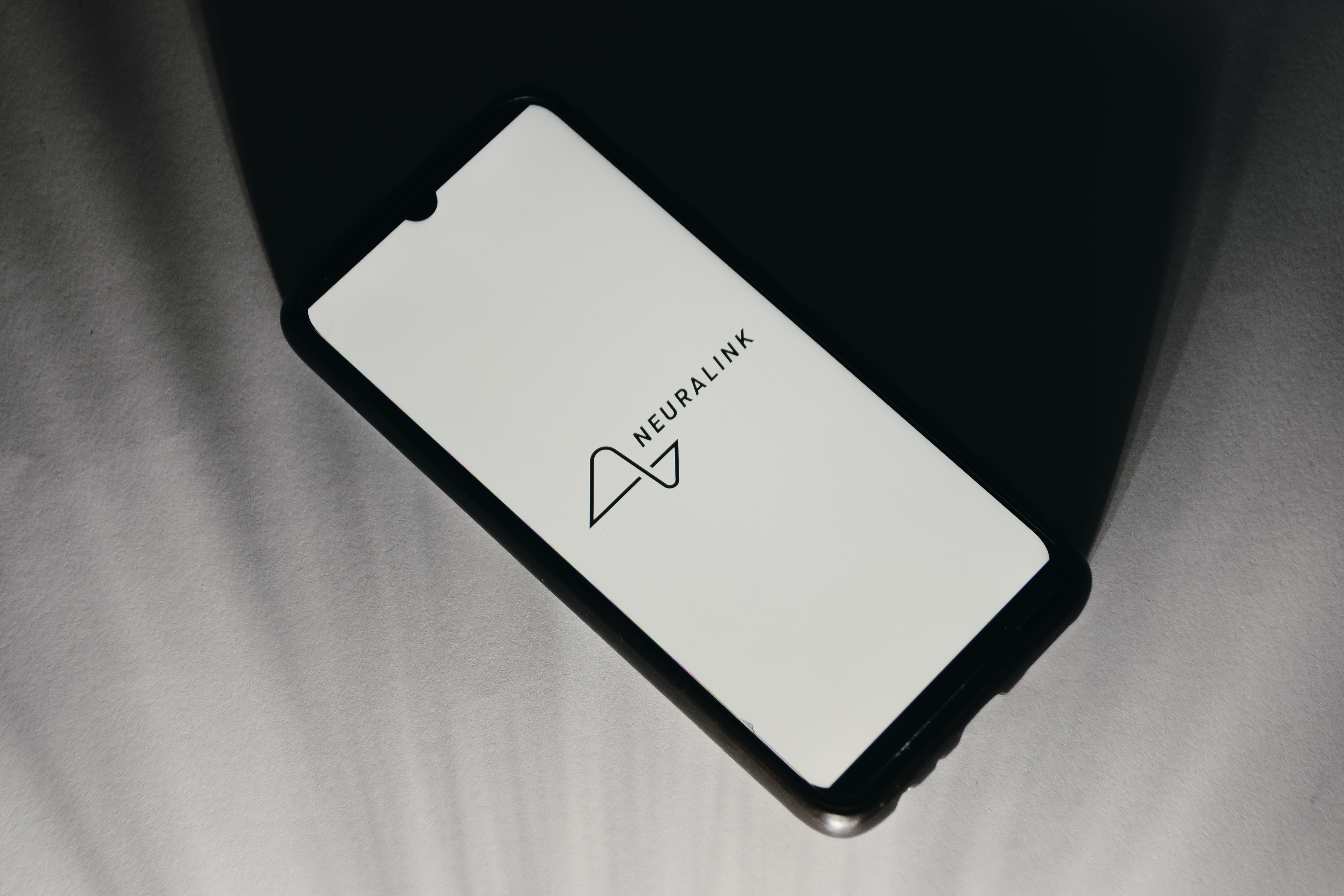Neuralink’ logo displayed on screen” width=”635″ height=”423″ data-caption=’Neuralink was founded by Elon Musk in 2016. <span class=”lazyload media-credit”>Nikolas Kokovlis/NurPhoto via Getty Images</span>’>
This time last year, Noland Arbaugh became the first human patient to receive a brain implant from Neuralink, Elon Musk’s neurotechnology startup. In the following months, two more patients have been implanted with Neuralink devices, according to the company. “They’re all working well,” Musk said of the three implants last week during a live streamed interview on X. Neuralink, which uses a surgical robot to implant its N1 brain-computer interface (BCI) into human brains, expects to perform 20 to 30 implants in patients this year, Musk added.
Founded in 2016, the Fremont, Calif-based Neuralink is currently working on offering digital autonomy to those with quadriplegia. By embedding threads containing electrodes within the human brain, the company’s device allows paralyzed patients to engage with digital devices through their thoughts.
Arbaugh, for example, was able to successfully play chess and various video games shortly after his surgery. The 30-year-old, who became paralyzed after a swimming accident in 2016, lost some of his device’s capabilities after its threads became loose. Neuralink subsequently restored much of the implant’s capabilities through software tweaks.
For its second human implant, Neuralink placed the threads deeper into the patient’s brain and reduced brain motion during surgery to avoid another event of thread retraction. The company’s second human patient, whose identity has not been made public, received the device in July and has since used the implant to play video games and design 3D objects via computer-aided design software, according to the company. Neuralink has yet to release details on its third device implant.
What’s next for Neuralink?
How long Neuralink’s devices will function after being implanted remains to be seen. “The thing I’m keeping an eye on is longevity: will it be working five, ten years from now?” Bradley Greger, an associate professor of neural engineering at Arizona State University, told Observer. Given the human body’s harsh response to implants, similar devices have typically failed after two to three years, said Greger, who pointed to Neuralink’s ultra-fine threads and the company’s focus on avoiding blood vessels when inserting them as encouraging signs for their device’s lifespan.
Neuralink’s three implants are part of its ongoing Prime study, which is evaluating the safety of Neuralink’s brain device in individuals with quadriplegia. In September 2024, the company announced the approval of a second study known as Convoy, which will explore extending its brain device capabilities to control an assistive robotic arm.
The company’s next focus will be Blindsight, a device that aims to restore sight, according to Musk. Designed for blind patients, it will “interface directly with the visual cortex in the brain and enable them to see,” he said. Also in September, Blindsight received a breakthrough device designation from the U.S. Food and Drug Administration (FDA), which streamlines the development of medical devices providing treatment or diagnosis for life-threatening conditions.
While Neuralink’s Prime and Convoy studies use implants to record electrical activity in the brain and convert it into signals, its Blindsight device would stimulate the brain with electricity to provide blind patients with enough points of light to create a crude image, according to Greger. “Right now, there’s almost nothing for people who are completely blind, there’s no treatment,” he said. “That could be a huge breakthrough.”

